Basic embroidery stitches for beginners
18 basic hand embroidery stitches to start stitching like a pro
Hand embroidery is a simple and enjoyable craft with many benefits. Learning basic embroidery stitches is a great way to start it.
This beginner embroidery guide covers 18 basic embroidery stitches perfect for newbies to learn embroidery essentials, build confidence, and improve their skills.

To support your learning, I created a free downloadable sampler with all 18 stitches so you can download it and practice at your own pace. And to make learning embroidery stitches even easier, I filmed a video tutorial. This video shows how to complete each stitch step-by-step, giving you visual guidance as you follow along.
Gather your embroidery supplies, download a free PDF sampler, and get ready to start practicing these basic embroidery stitches. Soon, you will be creating your own embroidery projects with confidence!
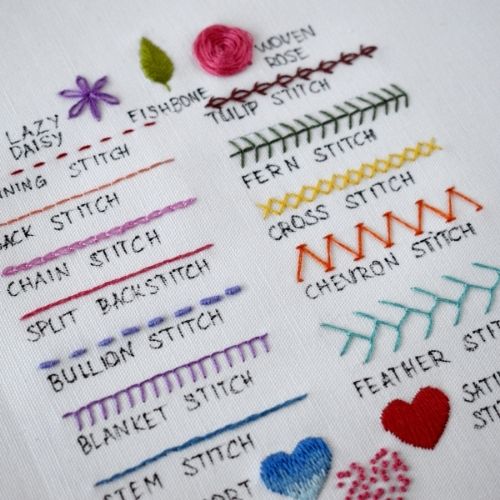
The sampler: 18 basic hand embroidery stitches
If you want to practice stitching all these basic embroidery stitches with me, download a free PDF sampler, and let’s stitch together!
Tolls and materials
- Printed sampler of “18 Basic Hand Embroidery Stitches“
- Fabric. Choose natural, even weave fabrics for hand embroidery. Linen and cotton blends are the most simple to work with.
- Embroidery hoop. I used 18 cm hoop. You can resize the pattern if needed.
- Embroidery floss. Choose colors that make you happy.
- Embroidery scissors.
- Friction pen for pattern transfer.
- Embroidery needles.
Hand embroidery step-by-step tutorial
- Download the pattern. Gather tools and materials.
This PDF pattern is made for an 18 cm hoop. You can resize it when printing.
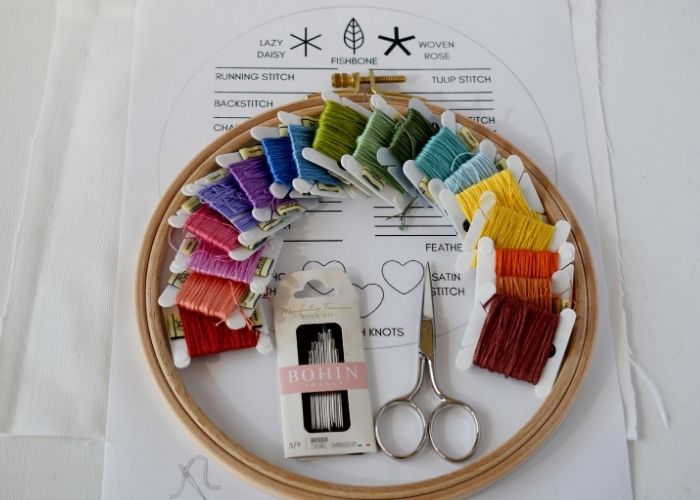
- Transfer the pattern to the fabric
I used a lightbox method and a friction pen for the pattern tracing. Read the article “How To Trace Pattern on Fabric: Five Methods For Fast And Easy Embroidery Pattern Transfer” and choose the best method for your fabric.
- Embroider each stitch
Watch a video tutorial below and embroider every stitch of the sampler. Take your time and pause the video as many times as needed.
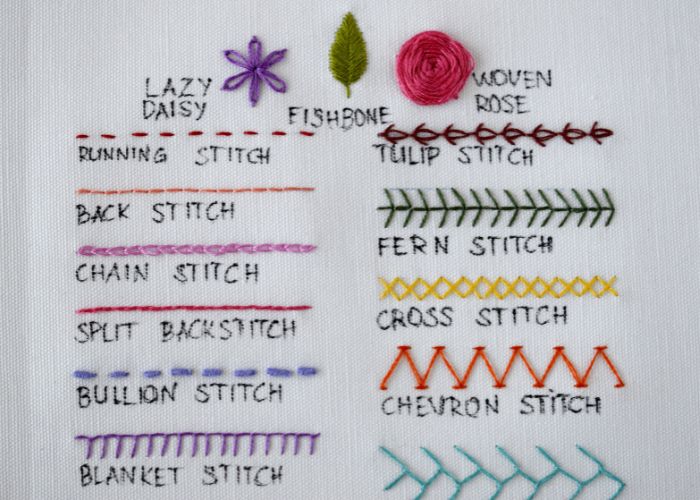
Video Tutorial
Recommended Products
Disclaimer. To cover the cost of creating free embroidery patterns and video tutorials for this blog, I do sometimes link to products. Please assume these links are affiliate links. If you choose to buy through my links then THANK YOU! – it will make it possible for me to keep doing this.
Running Stitch
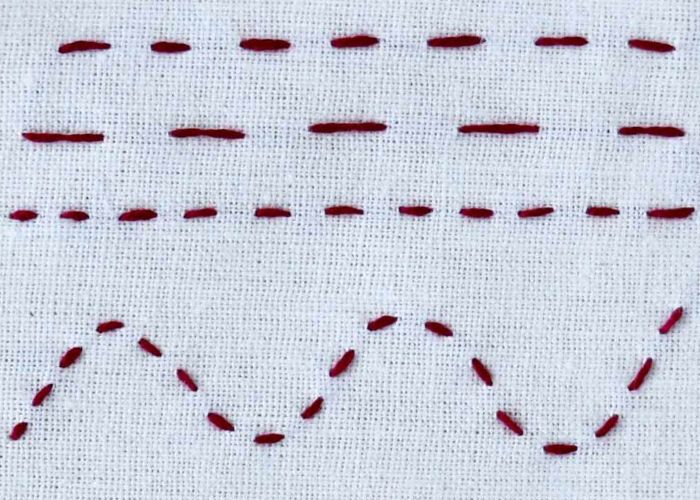
Running Stitch is one of the most basic hand embroidery stitches, on which all other forms of sewing are based. The stitch is worked by passing the needle in and out of the fabric. The needle is continuously pushed through the cloth, starting on one side and ending on the other side.
Running Stitch is widely used in textile arts and crafts. You can use this basic embroidery stitch for surface hand embroidery, mending, hand sewing, patchwork, or quilting.
This basic hand embroidery technique works great for outlines, lettering, borders, or filling. Some hand embroidery techniques like Sashiko or Kantha are made with only this stitch. In the article “Running Stitch and its Variations,” you can learn more about this embroidery technique and how to use it for different needs.
Backstitch
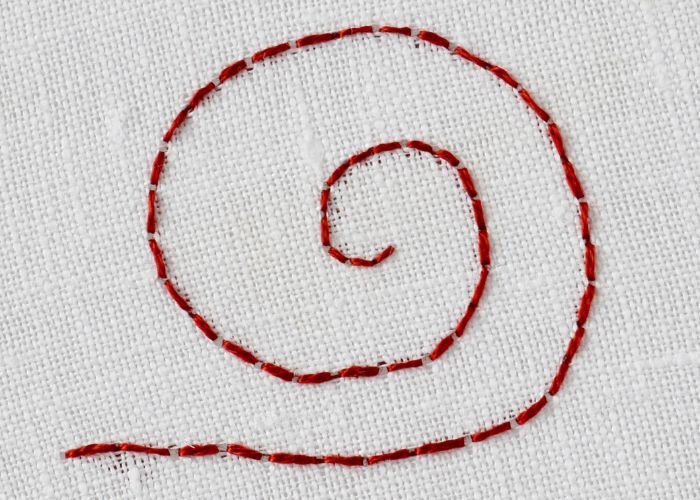
The Backstitch has a vital role in hand embroidery. This hand embroidery technique forms continuous lines, and we mainly use it to outline shapes and add fine detail to an embroidered picture. This hand embroidery technique also works great for embroidering lettering and is an indispensable part of composite decorative stitches.
This fundamental hand embroidery stitch can be worked straight and curved. Stitches of different lengths will allow you to make even the most minor and most detailed curves.
If you are curious to learn more about this needlework technique, the article “Backstitch and its variations. Hand embroidery stitches from the Backstitch family” dives deeper into variations and composite stitches made with Backstitch.
Chain Stitch
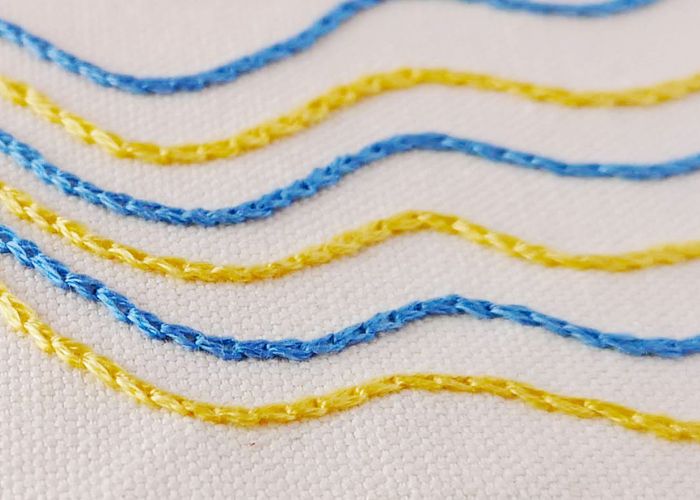
Chain Stitch is a basic hand embroidery stitch in which a series of looped stitches form a chain-like pattern. This embroidery technique is simple, fast to learn, and has various applications:
- Outlines
- Lettering
- Border designs
- Filling
- As a part of composite stitches
If you already know how to embroider basic Chain Stitch, take one step further and watch a video lesson, “Chain Stitch Mastery: Unlock Secrets of Chain Stitch Hand Embroidery!” for more advanced techniques.
Split Backstitch
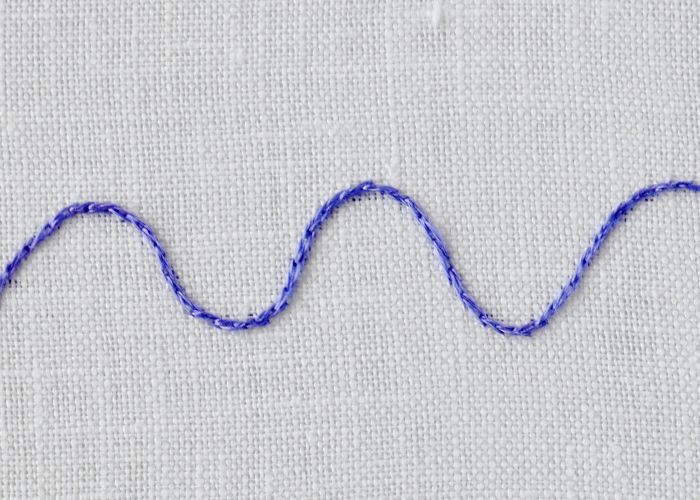
A Split Backstitch is a variation of the Backstitch that creates a smooth, continuous line. Note that this technique is different from the Split stitch! If you are curious, watch a video tutorial, “Split stitch vs. split backstitch. What is the difference?” to learn the difference.
It is easy to embroider straight lines and curves with Split Backstitch. For this reason, use it for:
- Outlines
- Lettering
- Simple borders
Bullion Stitch
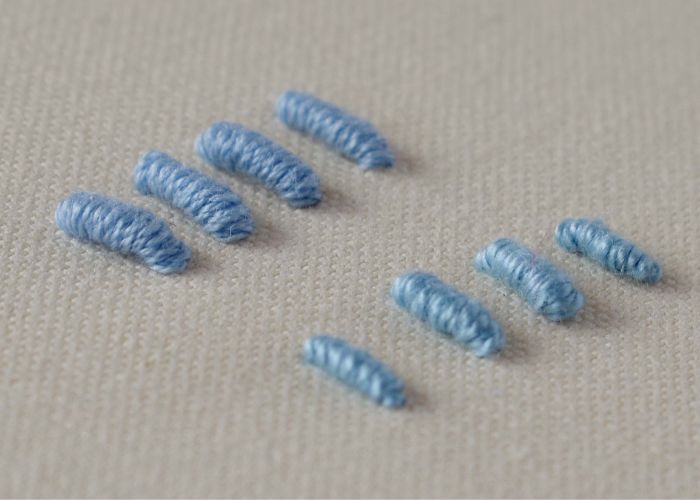
Bullion Knot is a decorative hand embroidery technique from the knot stitch family. The stitches may vary in length and form bulky knots or longer caterpillar shapes.
Bullion knot is a very decorative stitch and has vast application options. In botanical designs, we use Bullion knots to depict flowers, leaves, and berries. Besides that, bullion knots are often a part of composite stitches, border decor, and decorative edging. This dimensional stitch creates an engaging surface if we use this hand embroidery technique for filling.
For further learning, read the article “Six Bullion stitch flowers. Step-by-step hand embroidery guide” on this Blog to learn how to embroider six types of flowers: Daisy, Rose, Fan flower, Lavender, Forget Me Not, and Clover with only one stitch – Bullion Knot.
Blanket Stitch
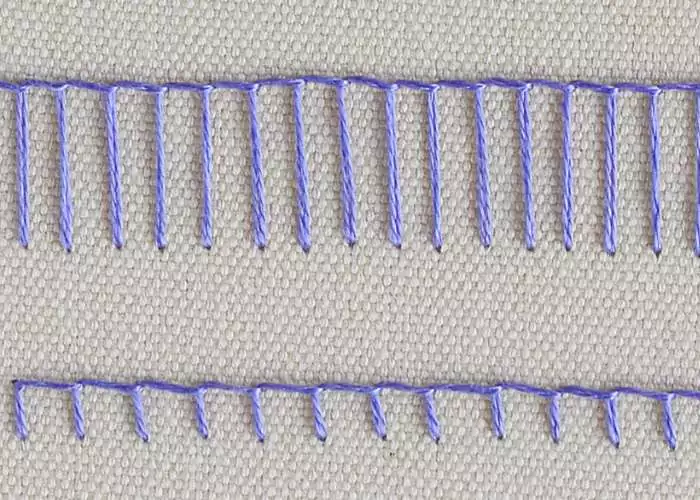
Blanket Stitch is one of the most versatile yet basic hand embroidery stitches. It is often mistaken for Buttonhole stitch, yet these two are different embroidery techniques. You can learn more about the “Difference between Blanket and Buttonhole stitches” on the Blog.
Blanket stitch is a universal embroidery technique. You can use this stitch for:
- Borders
- Outlines
- To secure the edges
- For mending
If you want to learn more about this technique and how to use it in your projects, read more about sewing with Blanket stitch, filling with Blanket stitch, and filling in circles with Blanket stitch.
Stem Stitch
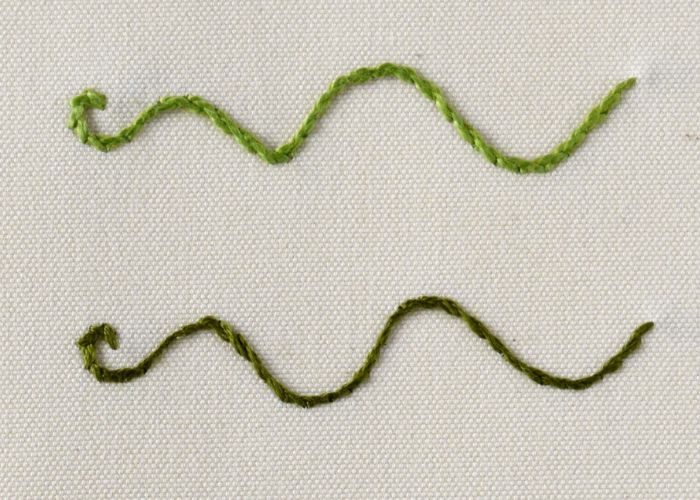
The Stem Stitch is one of the basic embroidery stitches that every hand embroidery beginner should learn. It forms a rope-like line and is indispensable in botanical embroidery.
Stem Stitch is handy for outlines, curves, waves, or tiny circles. Therefore, you can use it for lettering and borders. Also, the Stem Stitch works well as an outline for the Padded Satin stitch. Besides that, you can use it for filling too.
Long and Short Stitch
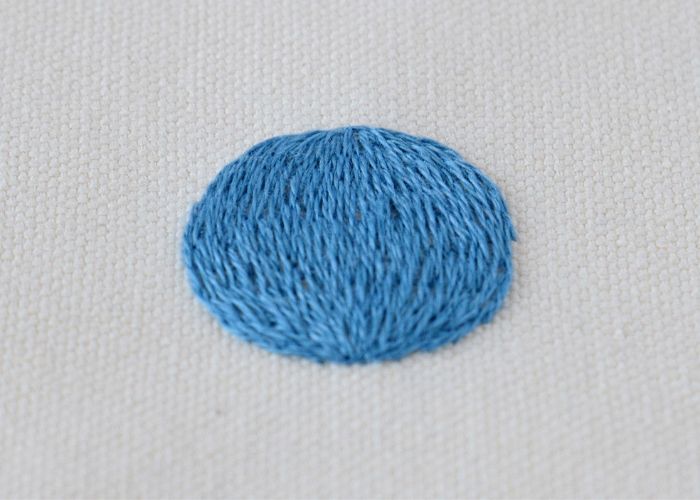
Long and Short Stitch is a hand embroidery technique for filling. A series of straight stitches of various lengths are positioned to cover the fabric surface smoothly.
This hand embroidery stitch is popular amongst hand embroidery enthusiasts and is widely used in different embroidery styles. The thread painting technique is popular in modern freehand embroidery for shading flower petals, leaves, birds, and animals.
Long and Short Stitch looks excellent in a single color, but you can create gradual color changes, too. Check out the video tutorial below and see how I used 3 colors to create a simple, gradual color change.
For further learning, read the article “Long and Short Stitch for Round Shapes. Learn how to Embroider a Sphere and a Circle” and make your shapes filled with this basic embroidery stitch look less basic.
Satin Stitch
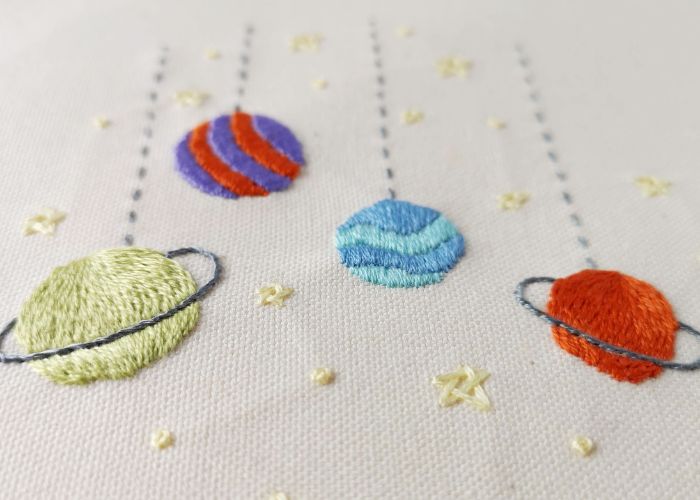
Satin Stitch is a basic hand embroidery technique for filling, worked in close, parallel rows. The stitch is worked by carrying the thread across the shape to be filled and returning underneath the material next to the made stitch. The stitches may be performed in any direction and may vary in size, for example, when filling in a leaf shape or a heart shape, like in this sampler.
Satin Stitch is excellent for:
- Filling small areas
- Lettering
- Depicting flowers, leaves, or other botanical elements
- As a base for composite decorative stitches
French Knot
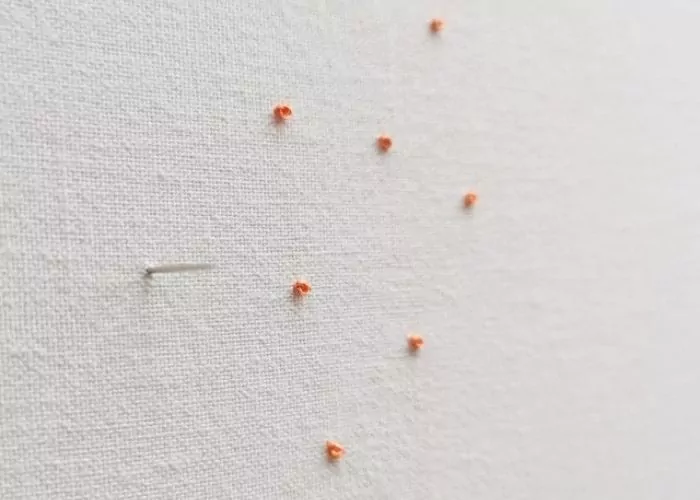
French Knot Stitch hand embroidery is a textural decorative hand embroidery technique. It has many uses – from filling areas and accent stitches to being a part of complex composite stitches as a lattice stitch.
The French knot is an embroidery technique in which the thread is knotted around itself in a specific way to create a voluminous knot on the surface of the fabric. It can be used as:
- Detached decorative stitch. Use it like the center of the flower, a dot to depict the eye of the bird, berries on the tree, or the dots in lettering.
- Filling stitch. French knots, positioned close to each other will create a voluminous, textural filling.
- Outline stitch. When positioned on the mark, close to each other, French knots will make a decorative border or outline.
- Stitch for sewing. If you are decorating with sequins, French knots will be handy for securing them to the fabric.
Tulip Stitch
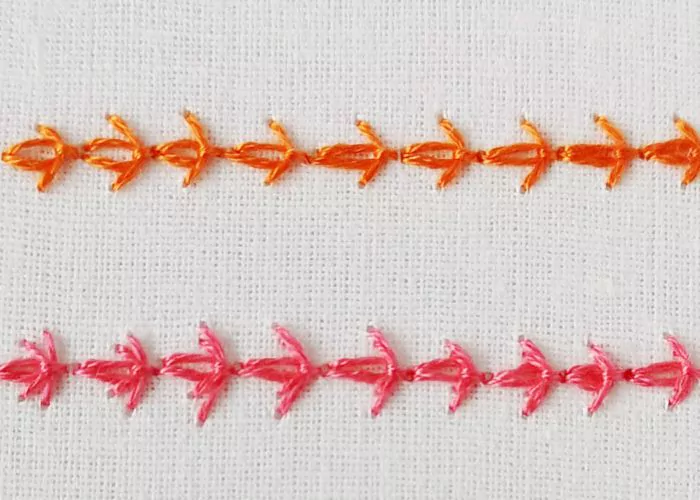
Tulip Stitch is a decorative variation of the Chain Stitch – a detached Chain Stitch with an extra slipped stitch to form decorative petals. This stitch is simple to make and can add floral vibes to your borders or decorated seams.
You can embroider it as a detached stitch or in horizontal or vertical straight lines. Use this stitch for borders, to decorate the seams, or as an accent detached stitch. It will look great in floral design to create small tulip flowers or as a part of more significant floral motives.
Fern Stitch
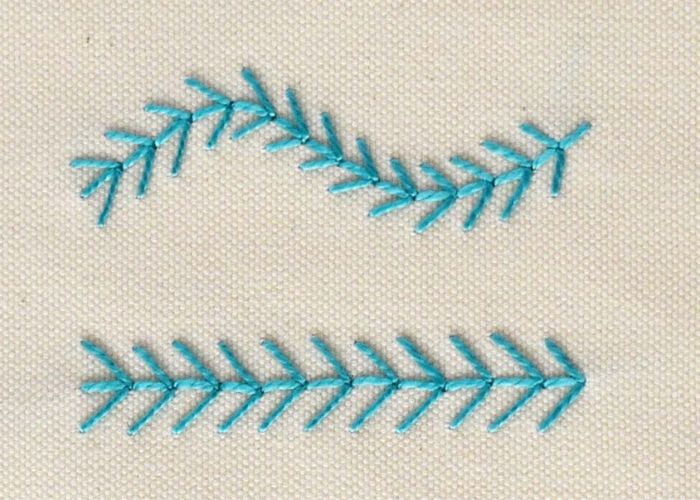
Fern Stitch embroidery is a simple hand embroidery stitch from the Straight stitch family. This stitch is formed from three straight stitches and can be embroidered in lines, rows, or even detached stitches. This embroidery stitch looks excellent in straight and curved lines and has multiple uses in textile arts:
- Use it for fancy outlines.
- Embroider this stitch as a decorative border.
- Make powdered filling with isolated Fern stitches.
- Depict the branches, vines, or other parts of the plants in the botanical embroidery with Fern stitch.
- Use this embroidery stitch in applique work to hold down applied fabric.
- Add this playful stitch to your crazy quilts.
- Use Fern stitch for mending projects – to reinforce the worn-out fabric or to attach the patches.
- Utilize Fern embroidery stitch for beadwork. This stitch looks great if you add some beads to it.
Cross Stitch
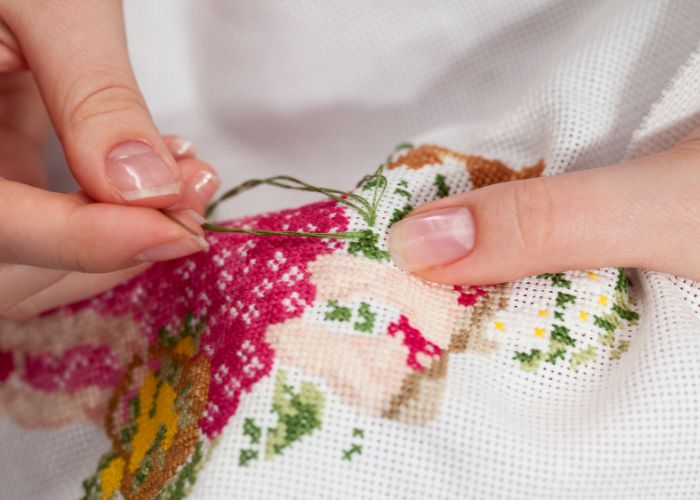
Cross stitch is a basic stitch that is simple to make, fast to learn, and has various applications in hand embroidery, sewing by hand, mending, and other needlework techniques.
You can use Cross Stitch for various purposes:
- As a single detached decorative stitch. Add add details or decorative elements to your design.
- Embroidered in a row, Cross Stitch will create a nice border, bold outline, or decorative embellishment.
- Filling with Cross Stitch is a traditional way to use this basic embroidery technique in counted thread embroidery.
Chevron Stitch
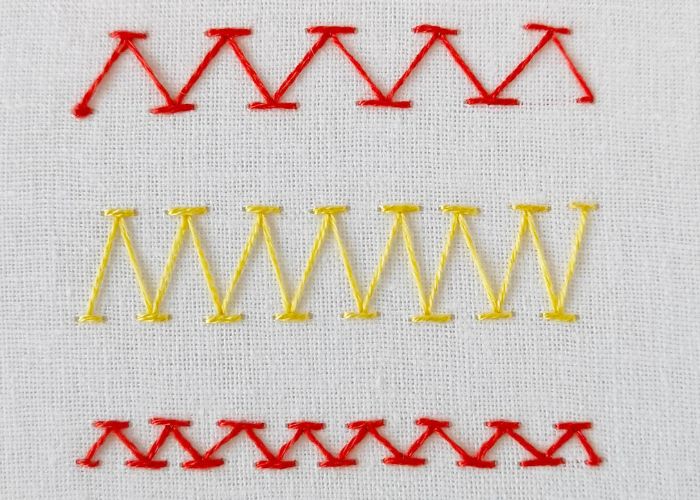
A Chevron Stitch embroidery is a zig-zag-shaped stitch done between two parallel lines. The lines can be straight and curved.
Tiny horizontal straight stitches are connected with diagonal lines to make this beautiful stitch.
The Chevron stitch is an embroidery technique often used for lines and borders.
Besides its decorative purpose, the Chevron stitch is excellent for sewing and mending. It is slightly elastic. Therefore, you can use it for the borders of the garments. This stitch is a practical choice for reinforcing seams or adding decorative edges to the fabric. Its robust structure makes it ideal for durable items like table linens or denim.
Feather Stitch
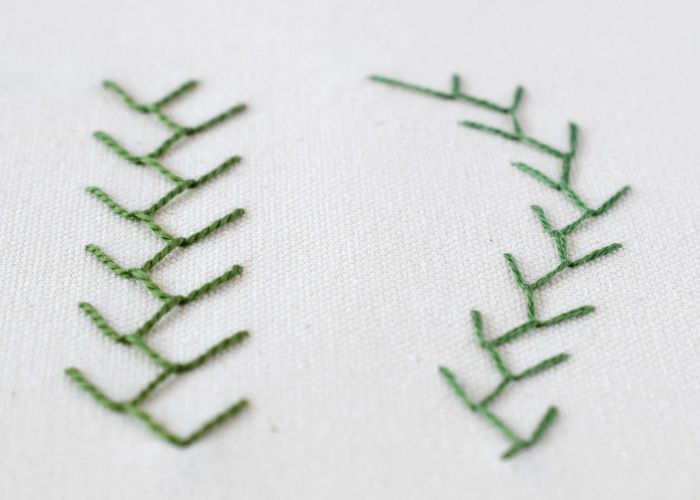
Feather Stitch is a decorative surface embroidery stitch created by positioning the loops of Fly stitches one under the other in an offset manner. This technique creates a decorative line that can be straight or curved.
Feather Stitch is a versatile and antique embroidery technique that is used in various styles, from traditional Crewelwork to intricate Stumpwork, Ribbon embroidery, and even Crazy Quilting.
In modern surface embroidery, the Feather stitch technique is used in botanical embroidery for decorative outlines or borders.
Fishbone stitch
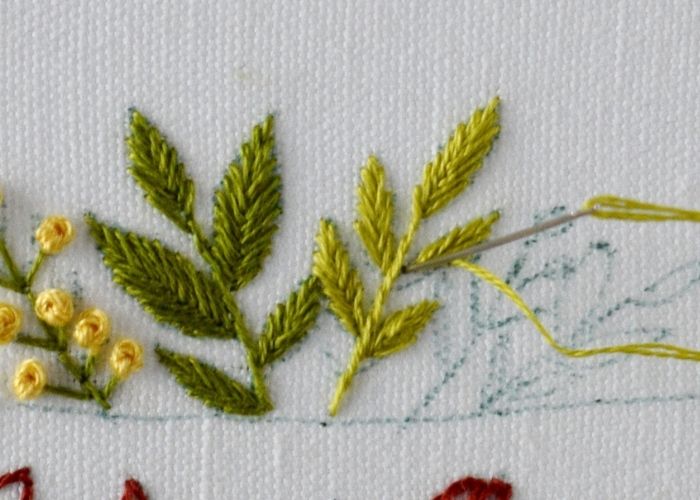
Fishbone Stitch is a basic embroidery technique that is a staple in my stitch library. It is simple, fast to learn and indispensable in botanical or floral embroidery.
The Fishbone embroidery stitch has various applications, from fashion to home décor to textile art. Its leafy structure makes it ideal for floral designs, and its texture adds depth to any piece.
Fishbone stitch embroidered in a row will create a gorgeous border design for home textiles or garments.
Lazy Daisy
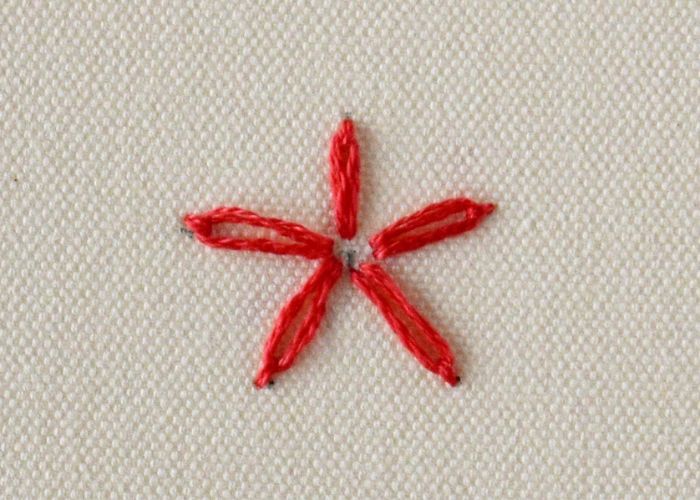
Lazy Daisy embroidery stitch is a very popular basic decorative stitch. It is a variation of the Chain Stitch, where detached chain stitches are positioned in a circle to form a simple flower.
This hand embroidery technique is decorative and fast to make. You can use it in botanical embroidery, for mending, crazy quilting, and for other decorative purposes.
Besides fabric crafts, this hand embroidery technique also works great for paper embroidery.
Woven rose
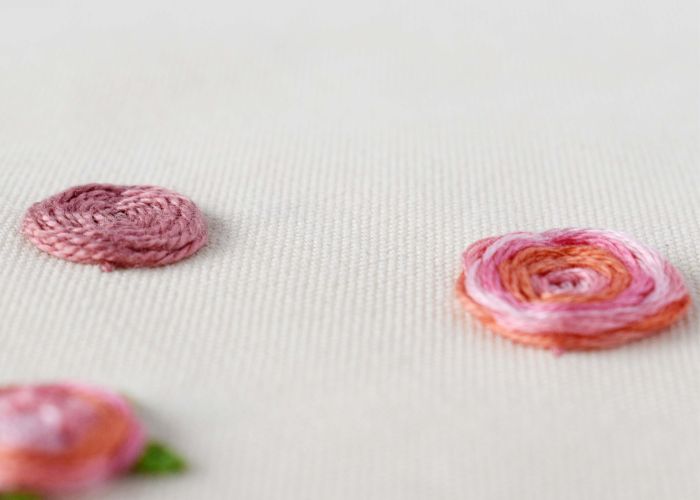
Woven Rose, also known as Woven wheel or a Spider wheel stitch is a composite decorative hand embroidery stitch from the Weaving stitch family. To create a woven flower with this stitch, start with 5 (or another odd number) spokes positioned in a circle. Then, you will weave a thread around these spokes.
This stitch creates a nice raised voluminous circle and is famous for making flowers.
The volume of the flower will depend on the embroidery thread you choose and the tension of the weaving stitches. In my 18 Basic Hand Embroidery Stitches sampler, a Woven Rose flower is embroidered with all six strands of pink embroidery floss.
Over to you
While hand embroidery might seem intimidating at first glance, mastering just a few basic embroidery stitches can set you on a path toward creating beautiful, professional-looking projects.
Practice these 18 foundational stitches and you will form the building blocks for countless embroidery designs and techniques. Practicing basic embroidery stitches will help you build your confidence and you can expand your repertoire later on as you progress.
This sampler showcases essential stitches like Running Stitch and more complex techniques like Long and Short Stitch or French Knot. Each stitch brings its own unique flair and expands your skill. Learn them all, and you will gain confidence and set a solid base for further learning.

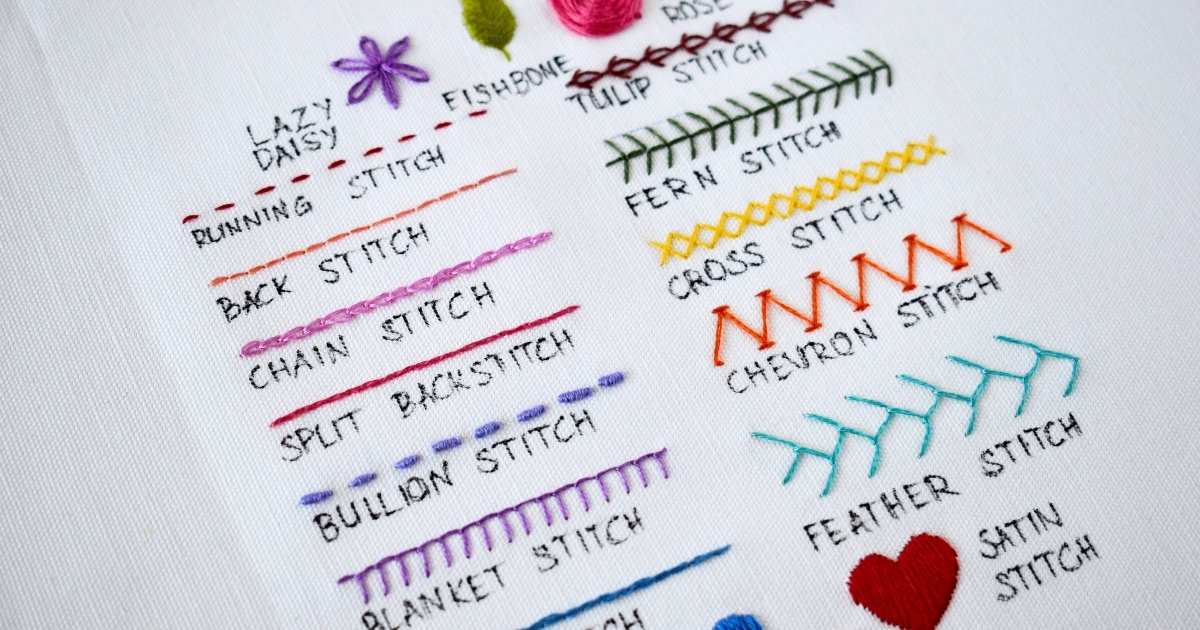
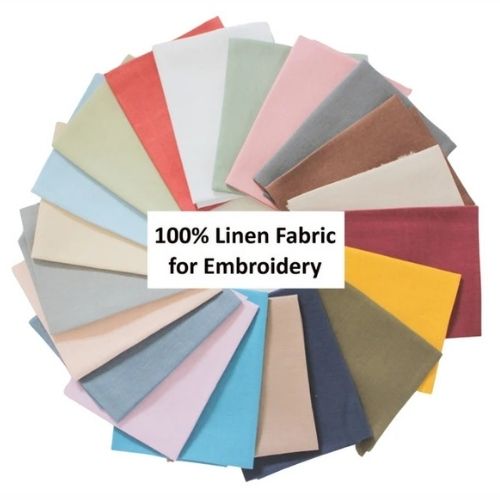
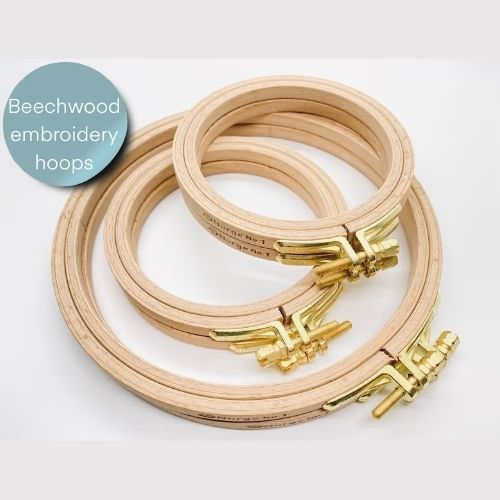
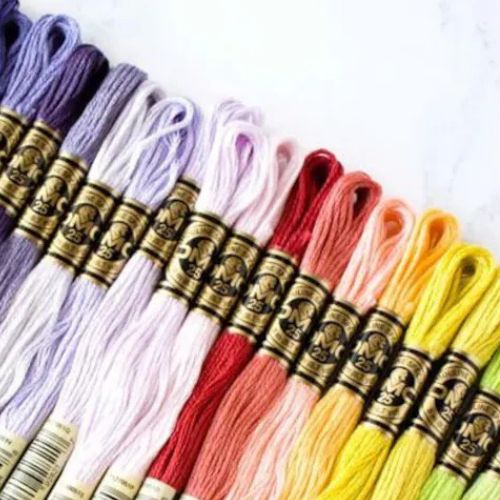
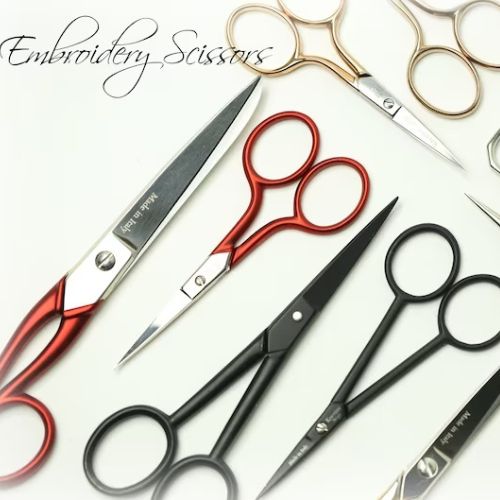

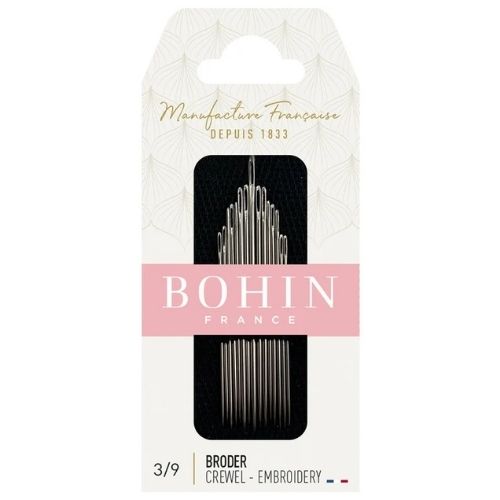
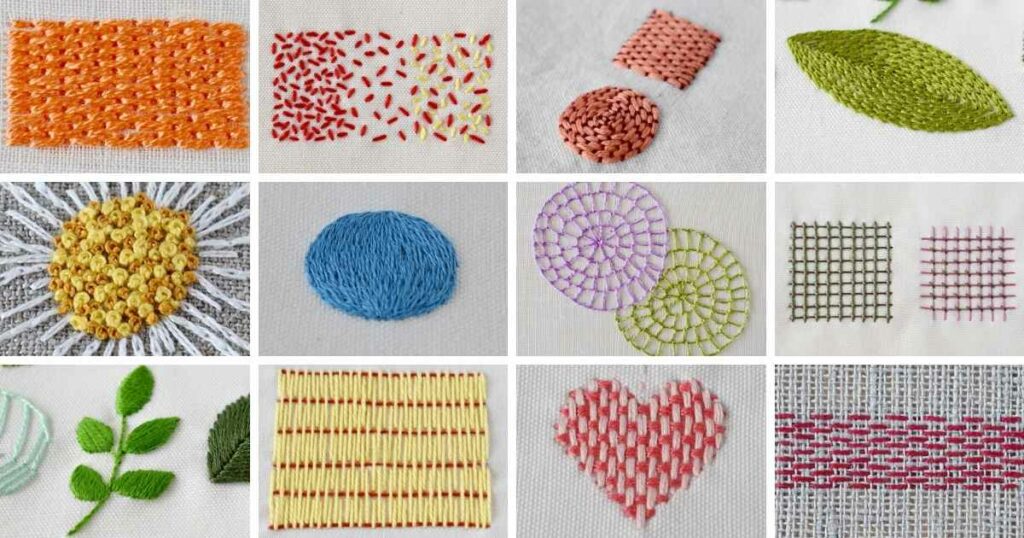
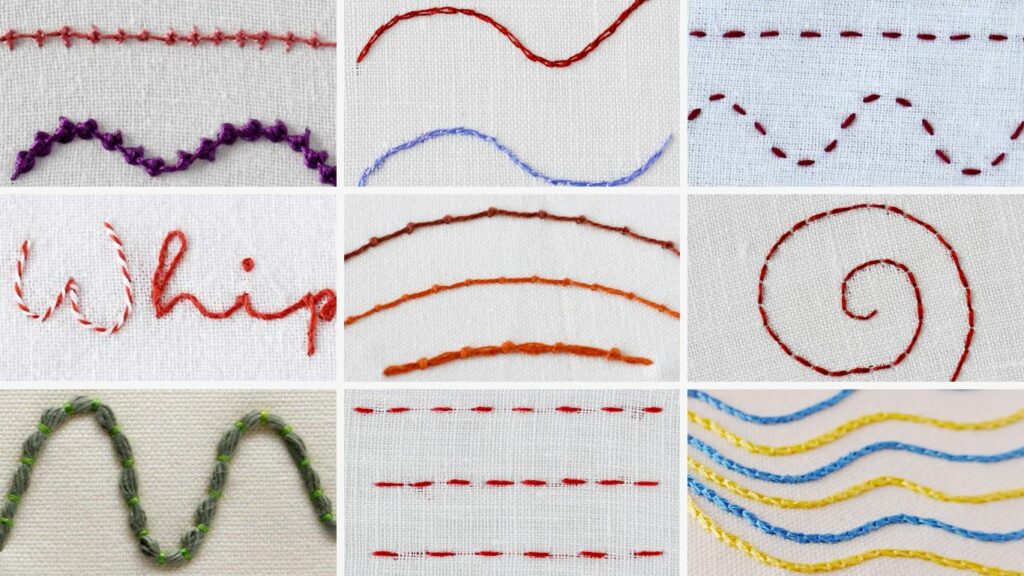
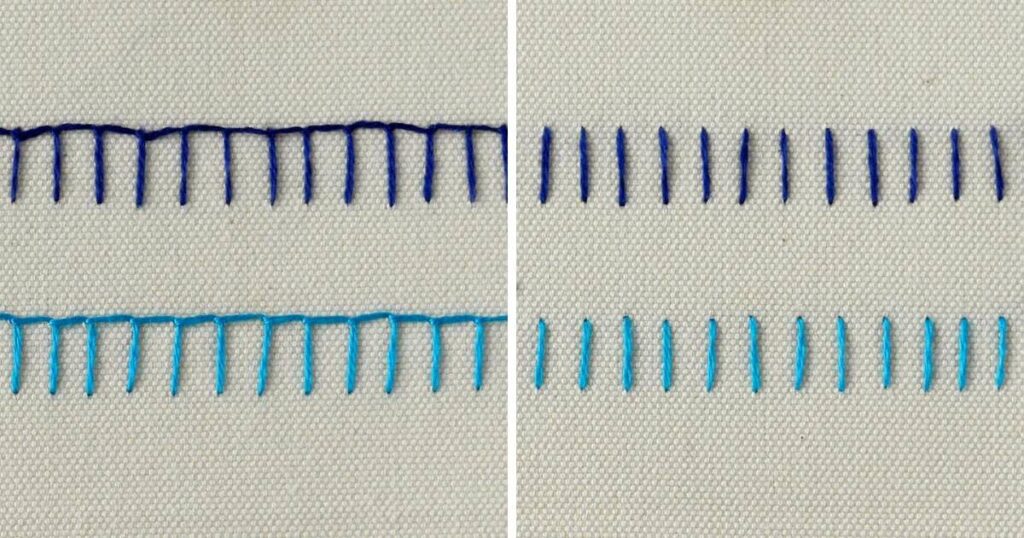
great!